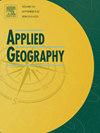Optimizing ecological security patterns in a megacity by enhancing urban-rural connectivity: Insights from Wuhan, China
IF 4
2区 地球科学
Q1 GEOGRAPHY
引用次数: 0
Abstract
Traditional approaches to urban ecological networks (ENs) often fail to address the ecological isolation between densely urbanized areas and their adjacent rural regions. To overcome this challenge, this study introduced a novel methodology for establishing urban-rural ENs, with an emphasis on landscape heterogeneity across urban-rural gradients (URGs). The approach distinguished urban and rural ecological sources (ESs) based on the “morphology-quality-scale” framework and simulated distinct urban-rural ecological corridors (ECs) using the minimum cumulative resistance model, incorporating both general and urban-rural specific resistance factors. Additionally, multi-species urban-rural ENs for biodiversity and ecological protection were optimized using graph theory and circuit theory. The results showed that: (1) The optimized urban-rural ecological network encompassed 114 ESs and 288 ECs, which were predominantly clustered in the southern and northern rural regions, whith a more dispersed pattern in suburban and urban areas. Compared to traditional strategies, the proposed network achieved α, β, and γ indices of 0.78, 2.53, and 0.85, respectively, thereby successfully enhancing ecological connectivity between urban and rural areas. (2) The optimization of the multi-species ENs improved their structure and connectivity across URGs, particularly for species with medium or long migration distances (≥10 km). (3) An ecological zoning protection and restoration strategy, comprising key protected areas, priority restoration areas, and ecological upgrading areas, was proposed based on an ecological security pattern of “two cores, six zones, and six straps.” These findings suggest that the proposed strategy can effectively strengthen urban-rural ecological linkages and provide valuable insights for ecological conservation policies in megacities.
求助全文
约1分钟内获得全文
求助全文
来源期刊

Applied Geography
GEOGRAPHY-
CiteScore
8.00
自引率
2.00%
发文量
134
期刊介绍:
Applied Geography is a journal devoted to the publication of research which utilizes geographic approaches (human, physical, nature-society and GIScience) to resolve human problems that have a spatial dimension. These problems may be related to the assessment, management and allocation of the world physical and/or human resources. The underlying rationale of the journal is that only through a clear understanding of the relevant societal, physical, and coupled natural-humans systems can we resolve such problems. Papers are invited on any theme involving the application of geographical theory and methodology in the resolution of human problems.
 求助内容:
求助内容: 应助结果提醒方式:
应助结果提醒方式:


